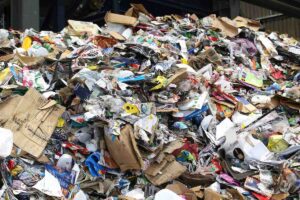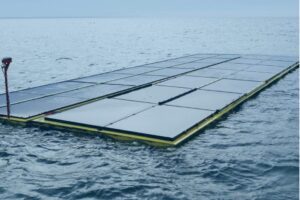Australia has enough wind and solar resources to more than double the world’s production of wind and solar energy, under an ambitious vision for Australia’s future as an emissions-free exporter prepared by researchers at the Australian National University.
In analysis published in the journal Energy, ANU researchers said that Australia has enormous potential to position itself as a major global supplier of renewable energy and other zero emissions resources.
And the numbers are staggering. Using just 2 per cent of Australia’s landmass for the production of wind and solar energy, Australia could produce as much as 7,000TWh a year of renewable electricity.
With Australia’s current electricity consumption standing at around 265TWh, the ANU analysis suggests Australia had the potential to export as much as 27-times its current electricity needs to the rest of the world.
“Under the scenario, Australia would export about 540 TWh per year of direct electricity to Asia and about 65 Mt a year of green hydrogen, the latter produced using about 4,200 TWh a year of electricity,” the study says.
“The direct electricity exports would require about 62GW of cable capacity, meaning at least five cables with capacity equal to what is currently the world’s largest (12 GW) and longest (3,300 km) overland HVDC cable.”
“The new export model would involve about 510 Mt a year of green steel exports and 18 Mt per year of green aluminium exports. These are sizeable flows and would involve a substantial ramping up of Australian production of these metals,” the study adds.
The vision for Australia’s export industries has been prepared by researchers from the ANU’s Crawford School of Public Policy.
To get to 2,700 per cent renewables, the researchers estimate that it would require the commissioning of around 1,264GW of new solar generation capacity and 919GW of wind generation capacity to provide a 50-50 wind-solar mix.
It’s an ambitious vision, with the researchers recognising the added capacity amounts to 1.8 times the world’s solar power capacity and 1.3 times the current amount of installed wind capacity as of 2020.
But this was counterbalanced with the enormous potential for renewable energy generation in Australia, and the small proportion of Australia’s landmass – just 2 per cent – that would need to be used to generate such large volumes of renewable electricity.

“If wind and solar farms are co-located with a 50:50 solar-to-wind generation mix, this would involve a land area of about 168,000 km2 – about 2 per cent of Australia’s land mass. To provide a comparator, this is equivalent to about 4 per cent of the area currently used for livestock grazing,” the study says.
The ANU study found that Australia could drive substantial emissions reductions across the Asia Pacific region by decarbonising its emissions-intensive export industries, including the aluminium and steel industries, and switching from fossil fuel exports to renewable energy exports.
An Australian focus on zero emissions exports could cut emissions in the Asia Pacific region by as much as 8.6 per cent – a substantial contribution to global decarbonisation efforts in a region responsible for around half of all global greenhouse gas emissions.
“With appropriate policy settings, Australia has an opportunity to make major contributions to achieving sustainable development goals in the Asia-Pacific, including for remote Aboriginal communities in Australia,” research co-author Dr Emma Aisbett said.
While Australia is responsible for around 1.2 per cent of global greenhouse gas emissions, its contribution to global emissions is significantly larger – around 5 per cent – when Australian exports of fossil fuels are taken into account.
The ANU study suggests that this provides a positive opportunity for Australia to make an outsized contribution to global decarbonisation efforts, given Australia’s ample access to high quality wind and solar resources and potential for low-cost renewable hydrogen production.
The ANU’s professor Ken Baldwin said achieving such an ambitious vision would bring substantial levels of investment into Australia.
“Substantial investment is needed to become a major supplier of zero-carbon energy and materials to the Asia-Pacific. This is potentially greater than the investment needed for Australia’s domestic energy transition” Baldwin said.









